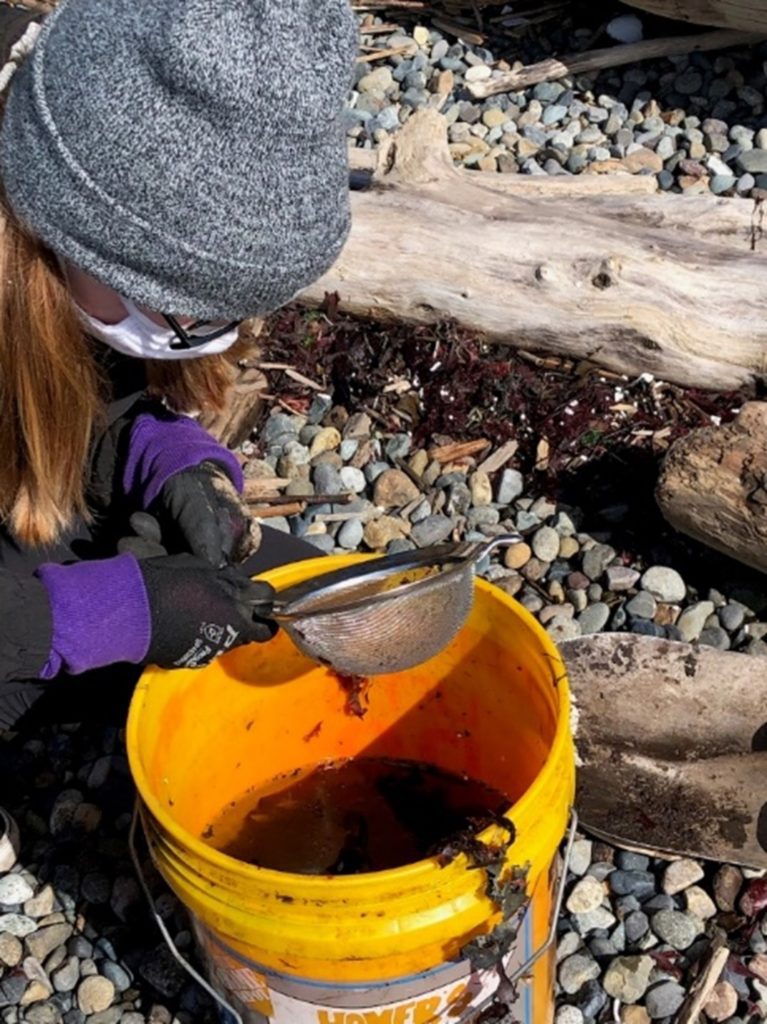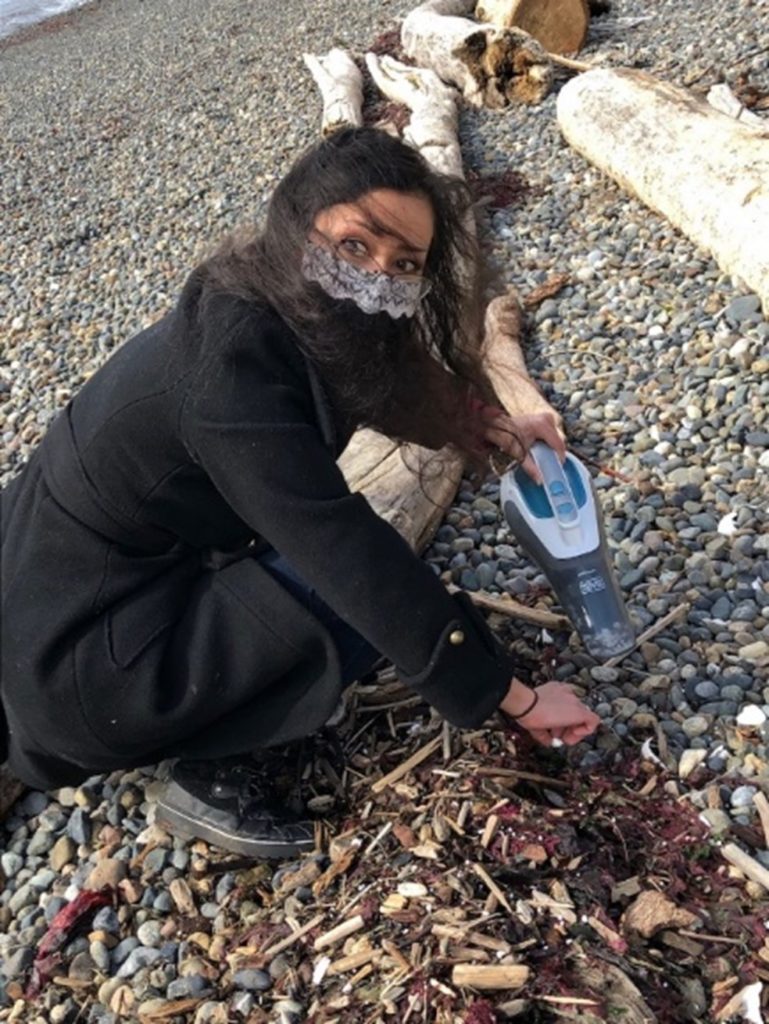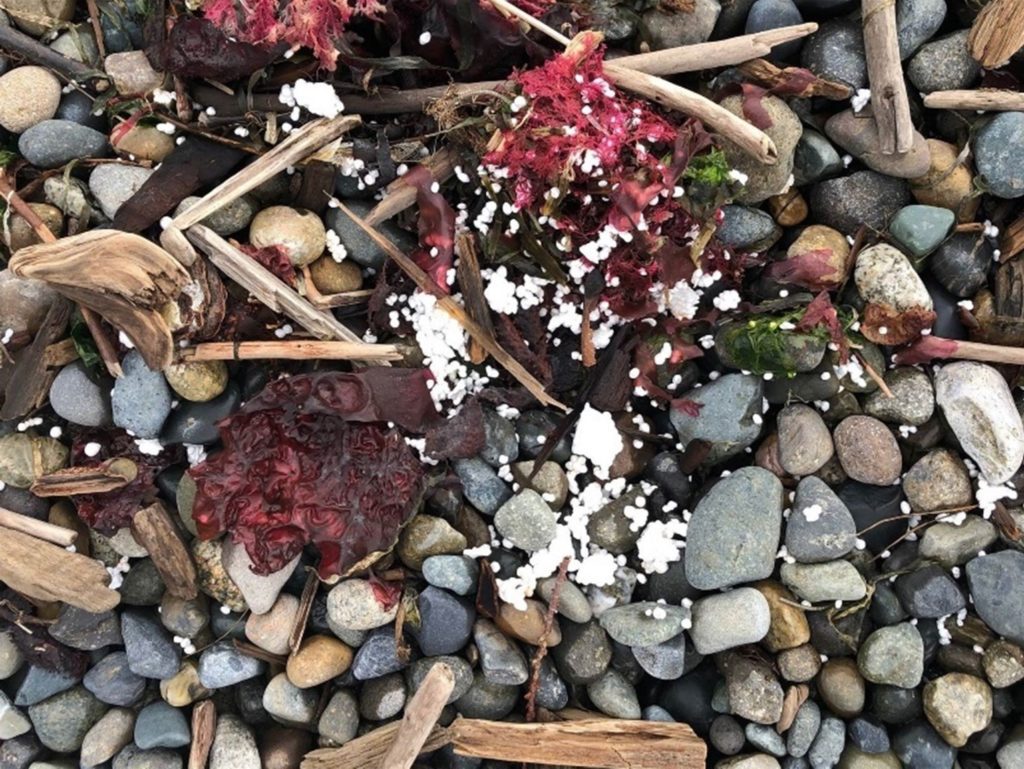
By Patti Bakker and Todd Burley
The intertidal zone is notoriously vibrant and elusive, shifting from underwater to exposed twice a day and impacted by the seasonal shifts of varying tides that offer gentle waves worthy of a sound machine or massive rollers that can lift whole logs. It is in this dynamic space that a drama of “tidal” proportions took place recently.
Seattle Parks and Recreation manages about 11 miles of saltwater coastline, most notably at regional parks like Discovery Park, Alki Park, and Lincoln Park. These beaches and vistas are popular for walks, nature exploration, and launching points for kayaks and stand up paddleboards. Visitors from around the region come for the open views along these natural beaches.
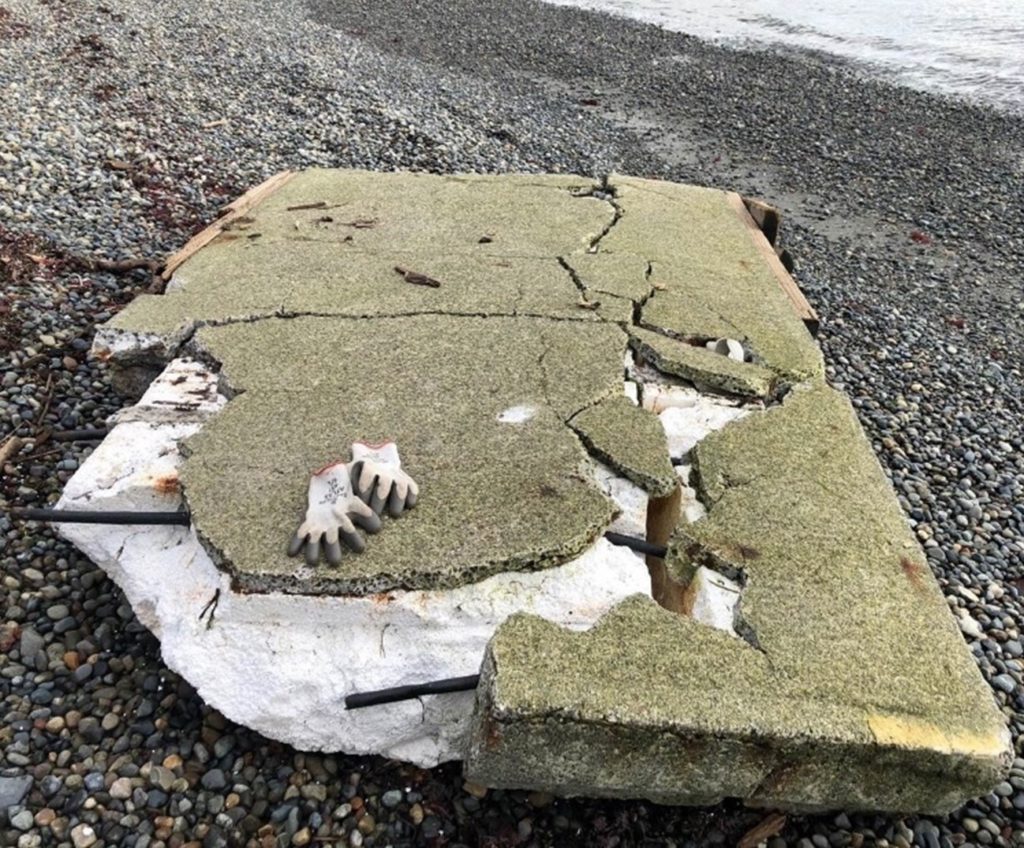
It was on one of these strolls that park goer Ruth noticed a washed-up abandoned dock on Lincoln Park’s beach. The Styrofoam core of this floating dock was rapidly losing beads that were polluting the beach and ocean ecosystems. She called the City on Monday 3/8/21 to report this large piece of trash, putting in motion a cascade of action.
SPR’s Public Information staff passed along the request to our Parks & Environment Division on Tuesday. The next day, Director Joey Furuto suggested reaching out to the Friends of Lincoln Park (FLiP), while Green Seattle Partnership and Wildlife Manager Patti Bakker got in touch with FLiP and our Heavy Equipment Crew. FLiP’s lead Lisa McGinty was able to visit the site immediately and provided critical initial feedback on location, size, and photos of the dock. She then reached out to the Puget Soundkeeper Alliance, who recommended methods for cleanup. SPR’s Heavy Equipment Crew mobilized Thursday and were able to safely remove the dock without impact to the beach. On Friday the FLiP volunteers, Patti Bakker and SPR Natural Areas Crew members arrived to start the detailed cleanup work.
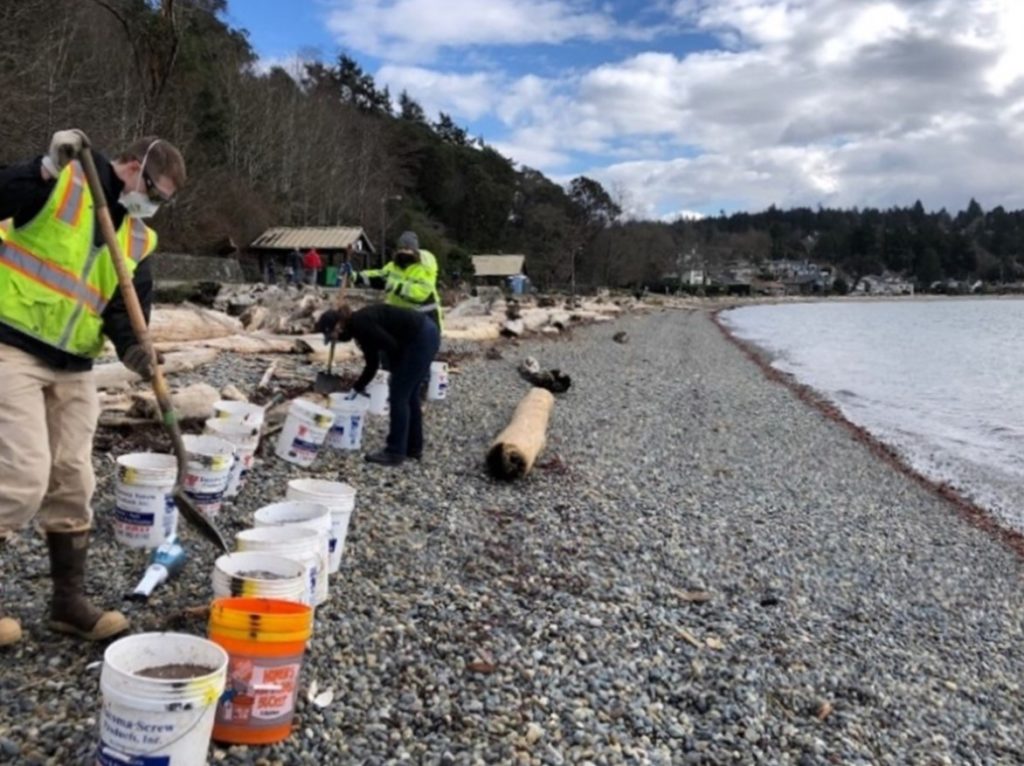
Beach cleanup is both urgent and challenging; the longer you wait, the harder it gets. Luckily, with prompt notification by a citizen and responsive action from SPR, we were able to clean up the beach within just a few days. Hand vacuums were used to get dry foam bits first. Then staff filled buckets with beach debris (think seaweed, rocks, driftwood, shells) and water, stirred, and let the foam bits float to the top. Using strainers, these were then scooped out, relieving the beach and associated wildlife with significantly less Styrofoam to contend with.
Many lessons were learned.
- First, the “public” in public park is essential – SPR staff can’t be everywhere, and we rely on visitors to let us know when there is something that needs attention. The City’s Find It Fix It app is a great tool that gets all the information needed for SPR to respond efficiently. Or you can call 206-684-7250.
- Second, it takes a village. From heavy equipment crews to beach walkers, we all have gifts to bring to these types of environmental cleanup efforts.
- Finally, speed matters on the beach! Each high tide adds debris and takes away litter. So, having a system ready is important for Seattle Parks and Recreation. And we need committed visitors who love our parks and the environment to share what they see so we can act on it.
The end result of this ecological drama was a beach cleaned up, community connections made, and the knowledge that working together we can make a difference. Thanks to all who made this happen!
